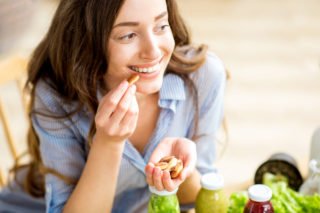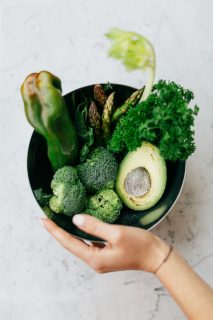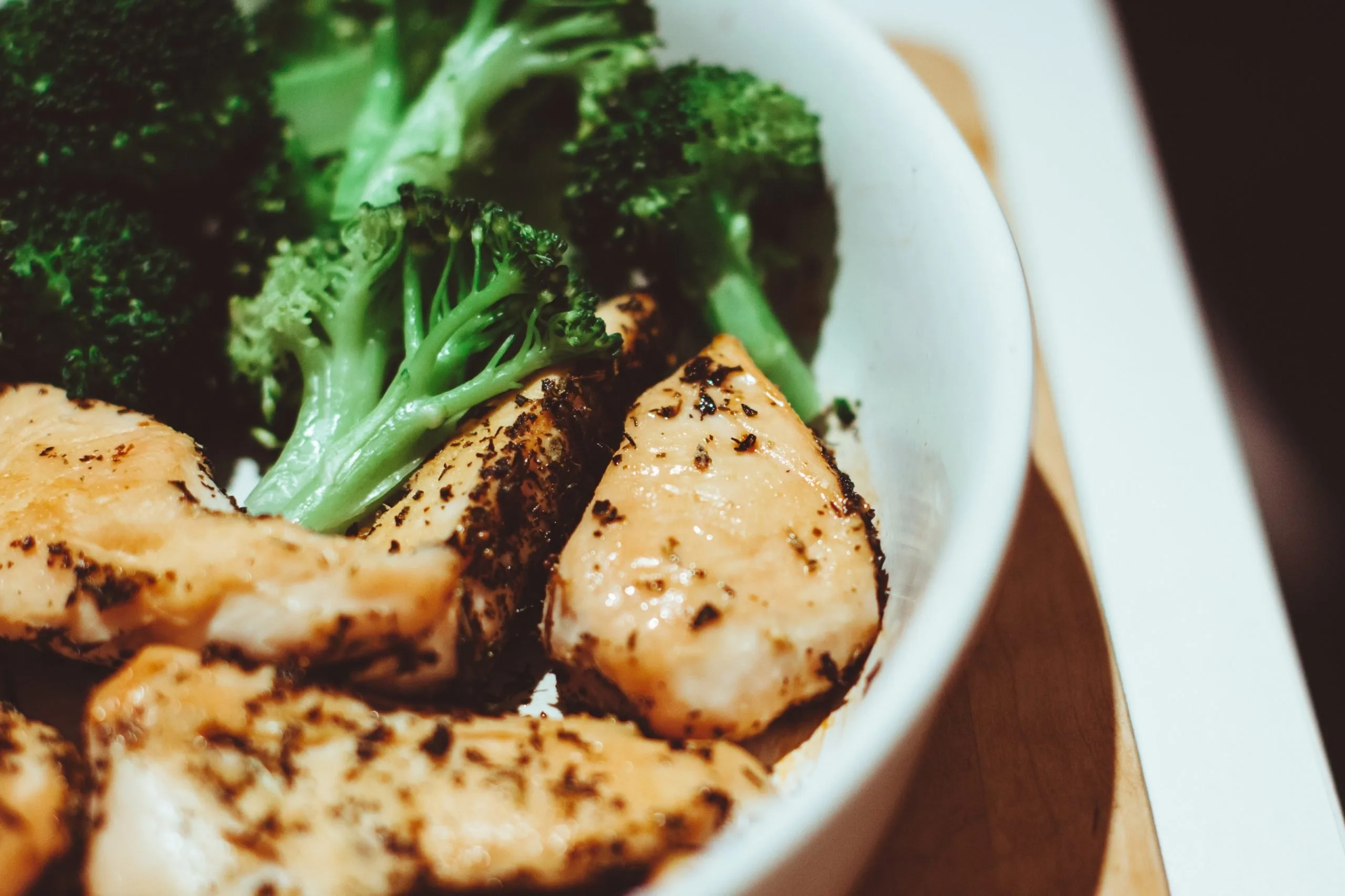There are lots of common misconceptions when it comes to the paleo diet. Often, people tend to view it as simply a high protein diet. However, the paleo diet is actually mostly plant-based. It’s not a high protein diet either. Here’s what you need to know.
Limits modern-day manufactured or engineered foods
The paleo diet is a dietary plan that is heavily based on what humans might have consumed during the Palaeolithic era. Hence the name. This typically includes lean meats, fish, fruits, vegetables, nuts, and seeds — foods that in the past could be obtained by hunting and gathering. Importantly, a paleo diet limits foods that became common when farming emerged about 10,000 years ago. These foods include dairy products, legumes, and grains.
Thus, the majority of this diet is plant-based with most foods coming from what the gatherers would have been able to find. These foods include nuts, seeds, vegetables, and fruits. Protein would have been eaten only when it was available and mostly in the form of lean meats or fish.
Your ideal paleo plate would be:
- 50% plant-based, but no white potatoes, beans, nightshades, and the like
- 30% lean meat, fish, eggs
- 20% fruit, nuts, seeds, healthy oils

RossHelen/Shutterstock
A snapshot of what you cannot eat
-
grains, including wheat, oats, and barley
-
legumes, such as beans, lentils, peas, and peanuts
-
dairy
-
trans fats (hydrogenated oils)
-
refined sugars
-
artificial sweeteners
-
low-fat or diet products
-
salt
What makes a successful paleo diet?
 Essentially, there is not a single paleo diet that you can follow. It’s likely that Paleolithic humans ate a wide variety of foods and that the foods they chose to eat were based mostly on availability. Nowadays, we can go to our local supermarket to buy chicken or beef, but ancient humans would have had to hunt and catch the prey themselves.
Essentially, there is not a single paleo diet that you can follow. It’s likely that Paleolithic humans ate a wide variety of foods and that the foods they chose to eat were based mostly on availability. Nowadays, we can go to our local supermarket to buy chicken or beef, but ancient humans would have had to hunt and catch the prey themselves.
It’s likely that in some paleolithic era humans followed what we would call a ‘low-carb high-protein’ diet. But it’s just as likely that others will have eaten a ‘high-carb low-protein’ diet. This diet, therefore, is a guideline and does not have to be the same for everyone. There are now several different versions of it. Some of these may include butter and even gluten-free grains such as rice.
Foods to eat
Generally, however, according to Kris Gunnars of Healthline, these are the foods that form the basic building blocks of a paleo diet:

Photo by Daria Shevtsova from Pexels
- Lots of vegetables: broccoli, kale, peppers, onions, carrots, etc…
- Meat: beef, lamb, chicken, turkey, and pork
- Fish: salmon, trout, haddock, shrimp, shellfish (ideally caught wild)
- Eggs: ideally free-range
- Fruits: apples, bananas, oranges, pears, avocados, strawberries, etc…
- Nuts and seeds: almonds, macadamia nuts, walnuts, hazelnuts, etc…
- Herbs and spices: including salt, garlic, turmeric, rosemary, parsley, etc…
- Healthy fats and oils: extra virgin olive oil, coconut oil, and avocado oil
Essentially, you want a diet full of whole, unprocessed foods. Try to choose the least processed option you can. Ideally grass-fed, pasture-raised, and organic. Other foods allowed in moderation include good quality red wine as it is high in antioxidants or dark chocolate that has 70% or higher cocoa content.
Foods to avoid
It’s all well and good to know what you can eat, but what should you avoid if you want to move towards a paleo diet? According to Healthline, these are the foods you should be avoiding.
- Sugar and high fructose corn syrup: This includes any soft drinks or sodas, sweets and chocolates, candy, and any healthy foods that are packed full of sugar.
- Grains: Ideally, grains including bread and pasta. Flours such as spelt, wheat, rye, or barley are to be avoided.
- Legumes: This includes beans and lentils
- Dairy: Most dairy, most especially low-fat dairy products are to be avoided. Some paleo diets do include full-fat dairies such as butter and cheese.
- Trans fats: Usually found in products like margarine or other processed foods. To avoid these, look for “hydrogenated” or “partially hydrogenated” oils on the packaging.
- Artificial sweeteners: Only natural sweeteners should be used on the paleo diet. Avoid artificial variants such as aspartame, sucralose, cyclamate, saccharin, and acesulfame potassium.
- Highly processed foods: This includes any food that says ‘low fat’ or ‘diet’ on the packaging. These foods usually contain lots of additives. This also includes meal replacements.
Benefits of eating the paleo diet
It may come across as a rather extreme way of eating, and it is. You’re essentially cutting out entire food groups from your diet. But the paleo diet does have quite a few benefits. One of the major benefits is of course weight loss. It’s the extreme opposite to the current ‘western diet’ which is packed full of processed foods. Instead, the paleo diet replaces processed foods with whole foods which are still packed full of nutrients.
Cutting out sugary foods and empty calories is definitely healthier and will ultimately lead to weight loss. According to a review in the American Journal of Clinical Nutrition, the paleo diet also has other major benefits. This includes lowering blood pressure, which ultimately reduces the risk of stroke, heart disease, heart attack, and death.
Celebs who follow a paleo diet
![kettlebell squats [longevity live]](https://longevitylive.com/wp-content/uploads/2018/09/blake-lively-54377-320x180.jpeg) There are also quite a few famous faces in the paleo diet club. The celebs include the likes of Jessica Biel and Blake Lively. According to the Los Angeles Times, Jessica Biel doesn’t consider herself fully paleo but does exclude wheat gluten, and dairy from her diet. To get rid of her baby weight before The Shallows started filming, Blake Lively turned to a paleo diet. Lively told Extra that she cut out gluten, soy, and processed foods and tried to ‘eat clean’.
There are also quite a few famous faces in the paleo diet club. The celebs include the likes of Jessica Biel and Blake Lively. According to the Los Angeles Times, Jessica Biel doesn’t consider herself fully paleo but does exclude wheat gluten, and dairy from her diet. To get rid of her baby weight before The Shallows started filming, Blake Lively turned to a paleo diet. Lively told Extra that she cut out gluten, soy, and processed foods and tried to ‘eat clean’.
And it’s not just the female celebs who have taken to paleo, Channing Tatum has tried it too. Voted the sexist man alive in 2012, it’s no surprise that Tatum has some tips and tricks up his sleeve to prepare for the big screen. Tatum went paleo to prepare for his role as an Olympic wrestler in Foxcatcher. Tatum explained that he ate mostly meat and vegetables during his preparation time, but did allow himself to “cheat” on the weekends. Professional golfer Phil Mickelson, actress and comedian Aisha Tyler, and even Matthew McConaughey are also reportedly followers of the paleo diet.
References
https://pubmed.ncbi.nlm.nih.gov/26269362/
https://www.everydayhealth.com/diet-nutrition/paleo-diet/what-are-risks-benefits-paleo-diet/
https://www.healthline.com/nutrition/paleo-diet-meal-plan-and-menu#TOC_TITLE_HDR_6
https://my.clevelandclinic.org/health/articles/17583-triglycerides–heart-health
https://www.everydayhealth.com/paleo-diet/diet/celebrities-who-have-tried-paleo-diet/
https://www.latimes.com/health/la-he-jessica-biel-5q-20170124-story.html



![women [longevity live]](https://longevitylive.com/wp-content/uploads/2020/01/photo-of-women-walking-down-the-street-1116984-100x100.jpg)










